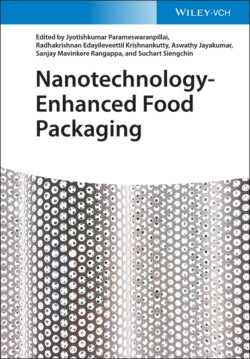Читать книгу Nanotechnology-Enhanced Food Packaging - Группа авторов - Страница 36
2.2.2 Cellulose and Derivatives
ОглавлениеCellulose is considered the most abundant biopolymer in the world, being a component of the plant tissues and vegetal cell wall. This biopolymer can be obtained from several plants such as cotton, sugarcane bagasse, eucalyptus, and wood, among others, which it become an environmental and economically feasible by-product [32]. In addition, derivatives of cellulose have also been used for food packaging applications, especially the cellulose ethers as carboxymethyl cellulose (CMC), ethylcellulose (EC), hydroxyethyl cellulose (HEC), hydroxypropyl methylcellulose (HPMC), and methylcellulose (MC) [33].
Cellulose is conformed of β-D-glucose monomers, which are 6-membered rings called pyranoses. The β-D-glucose units are bonded by acetal linkages (oxygen atoms) produced from dehydration reactions between the C-1 of the pyranose and C-4 of a neighbor pyranose [34]. The equatorial position of β-D-glucose hydroxyl functional groups causes a considerable linearization of cellulose chains that facilitates the formation of long chains (fibers) of the biopolymer [34]. The hydrogen bonds between hydroxyl groups (–OH) from different cellulose chains promote the formation of microcrystalline regions, while other micro-regions are characterized by a disordered structure (amorphous) due to low amount of hydrogen bonds [35].
Strong hydrogen bonds of the cellulose crystalline regions caused it to become mechanical and thermally resistant and insoluble in several solvents including water [36]. On the other hand, hydroxyl groups of cellulose amorphous regions are more distant between them than hydroxyl groups of crystalline regions, which allows physical interactions between cellulose and other molecules. In the case of water, cellulose is able to absorb a large number of molecules without dissolving them. This characterizes a high swelling ability of this biopolymer [33].
Cellulose ethers (MC, EC, CMC, HEC, HPMC) are biopolymers produced from substitution reactions of cellulose hydroxyl groups or alkylation and differ as to the substituting group and number of hydroxyl groups substituted (substituting degree) [33]. Generally, the cellulose etherification reactions are performed in alkaline medium using halides and alkyl sulfates as etherifying agents. The biggest advantage of the cellulose ethers in comparison with cellulose is their higher water solubility [36]. These materials are used to modify the rheology of solutions by changing of viscosity, increasing of water swelling ability, stabilizing of suspensions, gelling, and emulsifying and to form films and coatings that are more flexible than cellulose [35, 37].
Applications of films and coatings based on cellulose and its derivatives are presented in Table 2.2. It is observed that cellulose and its derivatives have the ability to form composites with a variety of other biopolymers for both active and smart packaging applications.
